
Do you want to know how you can backup your WordPress site to Google drive? If so, this is the post for you. READ ON!
Google accounts already come with 15GB of free cloud storage. A backup of your WordPress site can be kept in this storage in case something bad happens and you need to restore your site.
Our goal in this article is to show you how to backup your WordPress site automatically to Google Drive.
Table of Contents
An important part of keeping your site safe is keeping a backup copy of your website. With a few clicks, you can restore a backup of your website if something goes wrong.
You can recover your WordPress website even if a hacker encrypts your data and deletes it in the worst-case scenario.
A backup should also be created before making a major change to your site, such as changing the theme or editing your WordPress homepage. It is simply a matter of restoring a working version of their website from a backup if the change breaks their site.
In the event that your main hosting account gets hacked, you can restore your website using cloud storage software, such as Google Drive. Furthermore, it won’t eat up any of your WordPress hosting plan’s valuable storage space.
When you create a Google account, you will receive 15GB of free cloud storage for backups and files. An additional 100GB starts at $1.99 per month if you need more space.
There is no built-in backup solution for WordPress. Backup and restoring your WordPress site has never been easier thanks to several WordPress backup plugins.
There is no better backup plugin than UpdraftPlus for WordPress. A free plugin that automatically backs up your WordPress site to Google Drive lets you schedule backups.
In order to use UpdraftPlus, you must first install it and activate it. To learn how to install a WordPress plugin, check out our step-by-step guide.
After activating UpdraftPlus, select Google Drive as your backup storage location.
You can do this by going to your WordPress dashboard’s Settings > UpdraftPlus Backups. After clicking the ‘Settings’ tab, you will be taken to the settings page.

Using UpdraftPlus, you can easily backup your files to online storage services like Dropbox, Amazon S3, and Microsoft OneDrive.
Choosing a remote storage option such as Google Drive will allow you to back up your WordPress site to Google Drive.
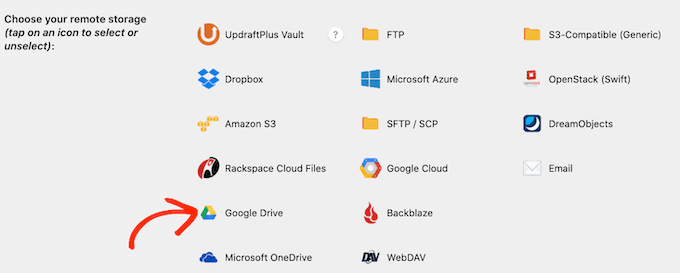
You will need to grant UpdraftPlus access to your Google account after choosing Google Drive as your storage location.
Sign in with Google by clicking on the ‘Sign in with Google’ button.

After you have given UpdraftPlus access to your Google account, follow the onscreen instructions.
Please confirm that you are happy to give UpdraftPlus access to your Google Drive by clicking on ‘Complete setup’ after reading the disclaimer.
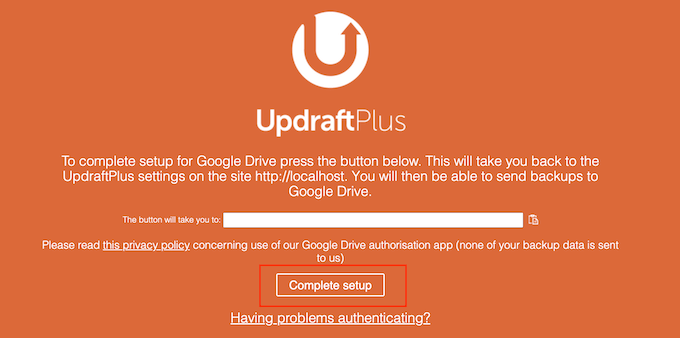
The UpdraftPlus settings page will appear once you’ve done this.
You can create an automatic backup schedule after selecting Google Drive as your storage location.
Click on the Save Changes button below the ‘Settings’ tab still in the ‘Settings’ tab. The backup of your website will now be automatic based on a schedule you set up in UpdraftPlus.
With UpdraftPlus, WordPress backups are divided into database backups and file backups.
First, let’s talk about files. The backup includes every piece of code, plugin and theme file, and image on your site.
Select the frequency of your WordPress website’s backups in the ‘Files backup schedule’ dropdown.
It is possible to set the frequency to once every month, every two hours, or even every 10 minutes.

Consider your site’s updates or new content when creating a schedule. It may be more convenient to backup your WordPress blog once a week rather than every day if you publish two blog posts each week, for example.
Backups are more important if you update your site frequently.
You should typically backup your online store as often as possible if you run an online store. Then you won’t lose important information like customer payment details or new orders.
UpdraftPlus will ask you how many backups you want to keep after you choose the frequency of your backups. You will be able to optimize your storage space this way.
By entering that number into the box next to ‘Keep this many scheduled backups,’ you can do this.

The backup settings can be changed at any point, so if you’re unclear, start with a larger number, then reduce it if it’s taking up too much space.
When UpdraftPlus reaches the quantity you choose, it will replace the oldest copy with fresh WordPress backups.
Next, under the ‘Database backup schedule’ area, define a backup schedule for your WordPress database.
WordPress maintains all of its posts and pages, comments, links, and website settings in the database, thus backing up the database is just as vital as backing up the files.
By repeating the method described above, you may instruct UpdraftPlus on how frequently it should make backups of your database and how many of them it should store.

When UpdraftPlus successfully generates a backup, it may send an email to your site’s admin email account confirming the backup’s completion. If a backup fails, you will not receive an email.
Scroll to the ‘Email’ option on the ‘Settings’ page. By ticking the box in this section, you may now activate these alerts.

UpdraftPlus will now give you an email alert every time it creates a backup.
After you’ve finished, click ‘Save Changes.’ UpdraftPlus will now automatically backup your site to Google Drive.
If you haven’t received any emails from UpdraftPlus, double-check that the plugin is correctly making backups in your Google Drive.
If you’re using the free trial of UpdraftPlus, a new ‘UpdraftPlus’ folder should appear in your Gmail account.
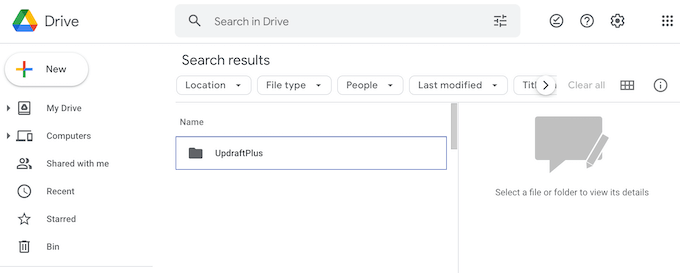
Simply access this folder to examine whether any WordPress backups are there.
The image below is a sample of that a few backups can appear in your Google Drive account.
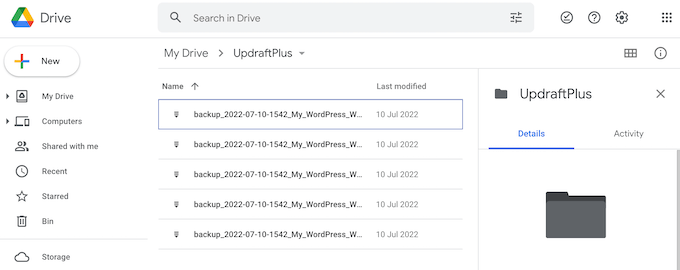
If UpdraftPlus is properly producing backups but you are not receiving email notifications, there is most likely an issue with how your emails are configured on your WordPress site.
Backups that are automated are an excellent strategy to safeguard your website. However, even after setting up an automated backup plan, you may occasionally need to do a manual backup.
Before making any major changes, such as changing your WordPress version, make a manual backup. You may also make a manual backup after publishing a large amount of fresh information.
Go to Settings > UpdraftPlus Backups to manually build a backup of your WordPress site on Google Drive. Then, just select the ‘Backup/Restore’ tab.
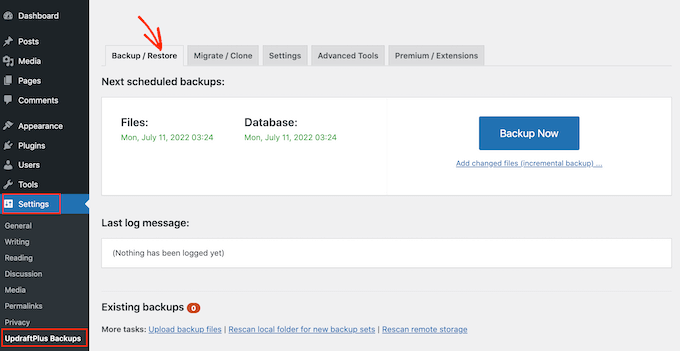
To begin creating a manual backup right away, simply click the ‘Backup Now’ option. UpdraftPlus will display some basic options for configuring the manual Google Drive backup.
UpdraftPlus, like an automatic backup, backs up all of your files and the WordPress database by default. It will also make use of the same remote storage location as your automated backups. This is Google Drive for us.
The default settings should be sufficient for most websites, so click the ‘Backup Now’ button when you’re ready.
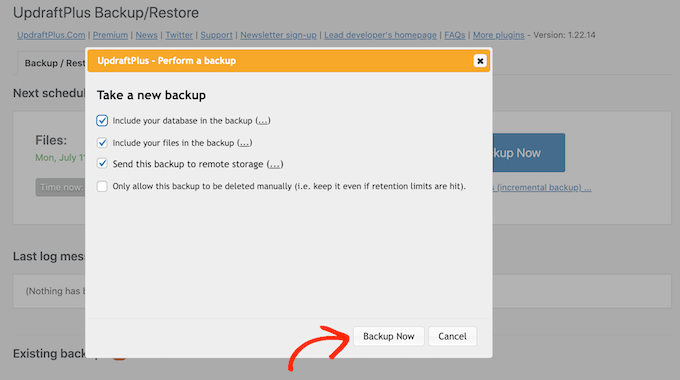
Creating backups using UpdraftPlus is simple, but the ability to restore them from Google Drive is even simpler.
If your WordPress site was hacked or you simply want to start again, the first step is to delete everything and reinstall WordPress.
After that, you must reinstall and activate the UpdraftPlus plugin on your new WordPress website. If you need assistance, please visit our instructions on installing a WordPress plugin.
After activation, navigate to the Settings > UpdraftPlus Backups page and select the ‘Settings’ option.
Click on Google Drive in the ‘Choose your remote storage’ area.
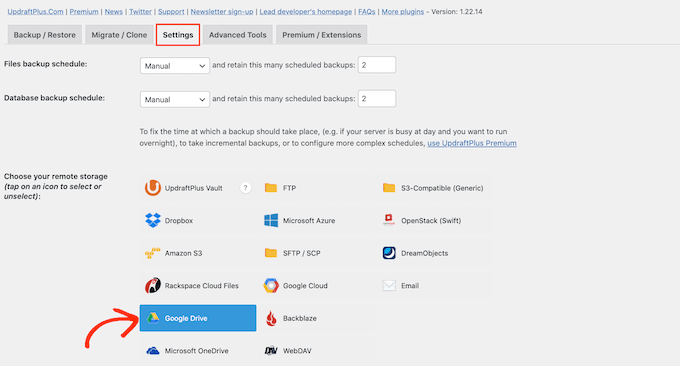
You may now grant UpdraftPlus access to the Google account where you saved all of your website’s backups in Drive by following the onscreen steps.
Click the ‘Backup/Restore’ option after linking UpdraftPlus to your Google account.
UpdraftPlus will now check your Google Drive and report any backups it finds. After that, just locate the backup you want to restore and click ‘Restore.’

Then, choose the elements that you wish to restore. Checking all of the boxes is usually the best choice if you’re restoring to a fresh WordPress installation.
After you’ve decided on your components, click the ‘Next’ button.
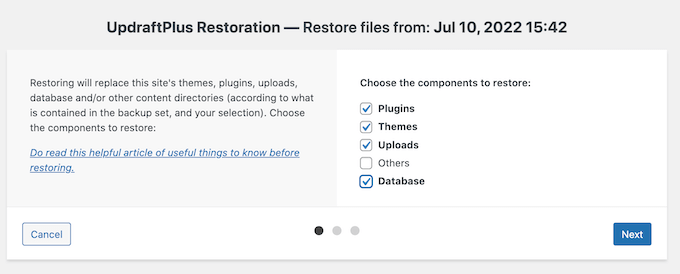
UpdraftPlus will now get all of the data required to restore the WordPress backup from Google Drive.
Once it has successfully imported all of the necessary files, simply click the ‘Restore’ option. UpdraftPlus will now retrieve your Google Drive backup.
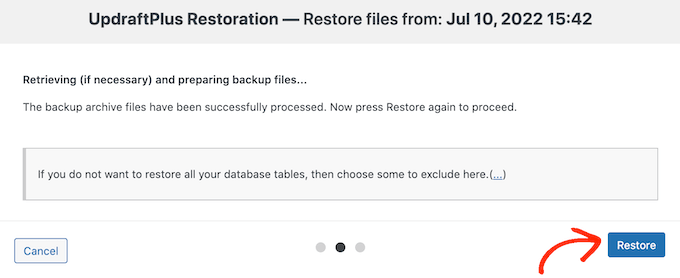
Depending on the size of your backup and the speed of your Internet connection, this might take a few minutes.
When it’s done, a ‘Restore Successful’ notification will appear at the bottom of an Activity log. At this point, you may return to the settings and finish things up by clicking the ‘Return to UpdraftPlus configuration’ option.

That’s all! You have just recovered your WordPress website from Google Drive.
We hope this article helped you learn how you can backup your WordPress site to Google Drive. You may also want to see our guide on 13+ signs that your WordPress site is hacked and how you can fix them, and our expert picks of the best responsive WordPress themes you can count on in 2022.
If you like this post, be with ThemeLooks and subscribe to our WordPress video tutorials on YouTube. We may also be found on Twitter, LinkedIn, and Facebook.